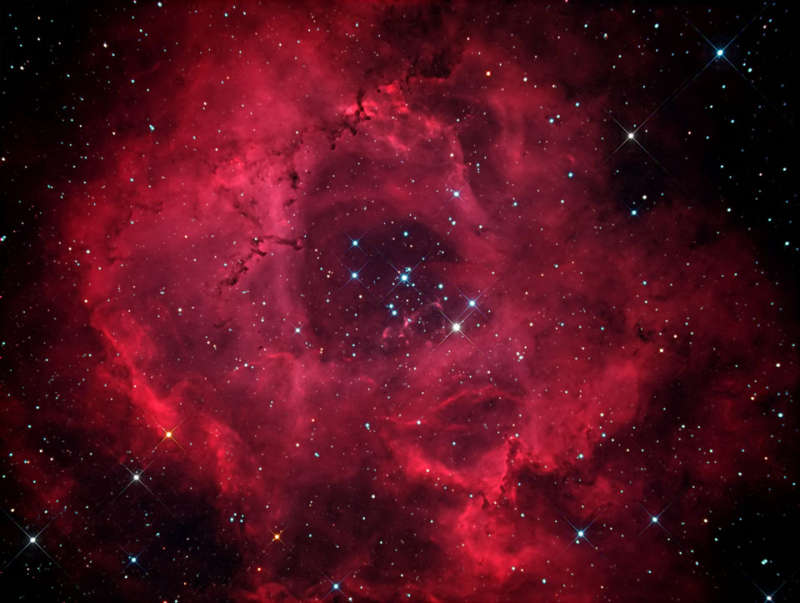Credit & Copyright: Brian Davis
Explanation:
The Rosette Nebula is not the only cosmic cloud
of gas and dust to evoke the imagery
of flowers -- but it is the most famous.
At the edge of a large
molecular cloud
in Monoceros, some 5,000 light
years away, the petals of this
rose are actually a
stellar nursery whose lovely, symmetric shape is
sculpted by the
winds and radiation from its central cluster of
hot young stars.
The stars in the energetic cluster, cataloged
as NGC 2244, are only
a few million years old, while the central cavity
in the Rosette Nebula,
cataloged as NGC 2237, is about 50 light-years in diameter.
The nebula can be seen
firsthand with a small telescope toward the constellation of the
Unicorn (Monoceros).
1999 2000 2001 2002 2003 2004 2005 2006 2007 2008 2009 2010 2011 2012 2013 2014 2015 2016 2017 2018 2019 2020 2021 2022 2023 2024 2025 |
Yanvar' Fevral' Mart Aprel' Mai Iyun' Iyul' Avgust Sentyabr' Oktyabr' Noyabr' Dekabr' |
NASA Web Site Statements, Warnings, and Disclaimers
NASA Official: Jay Norris. Specific rights apply.
A service of: LHEA at NASA / GSFC
& Michigan Tech. U.
|
Publikacii s klyuchevymi slovami:
NGC 2244 - NGC 2237 - Rosette Nebula - star formation - Tumannost' Rozetka - zvezdoobrazovanie
Publikacii so slovami: NGC 2244 - NGC 2237 - Rosette Nebula - star formation - Tumannost' Rozetka - zvezdoobrazovanie | |
Sm. takzhe:
Vse publikacii na tu zhe temu >> | |
